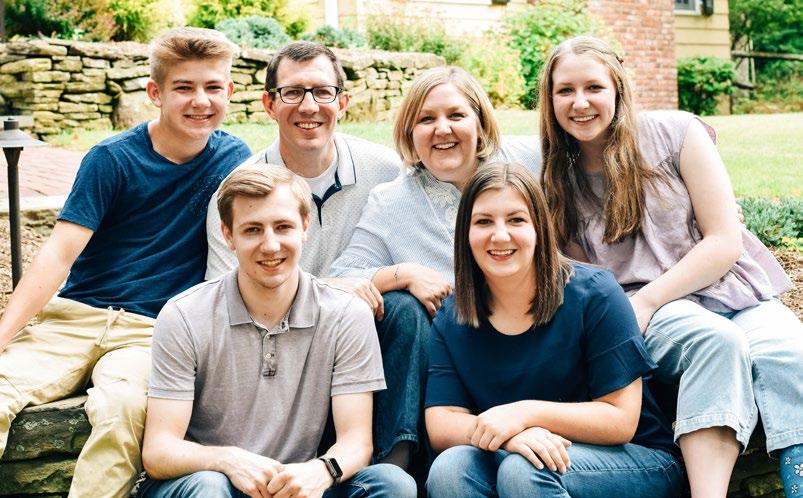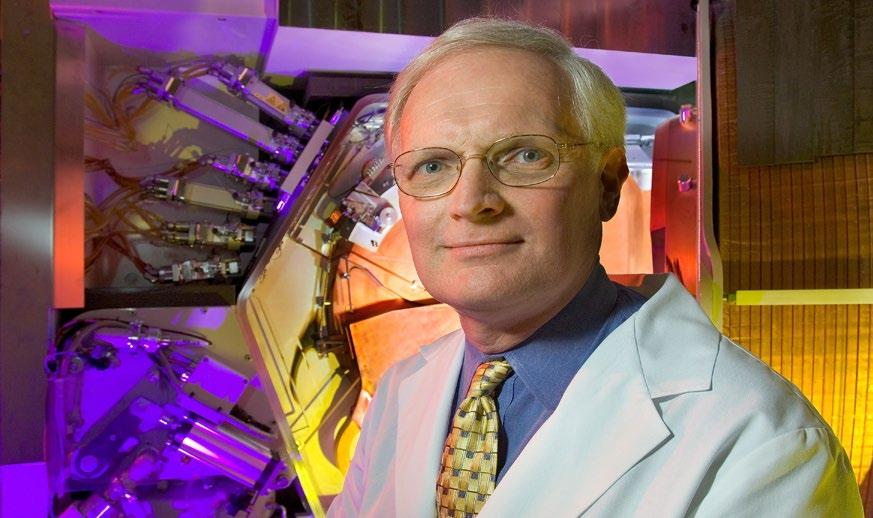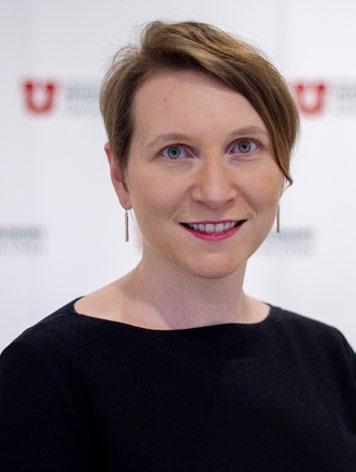
4 minute read
Alumni Profile: McKay Hyde From Academia to Goldman Sachs
Alumni Profile: McKay Hyde
From Academia to Goldman Sachs
McKay Hyde,
Courtesy of Goldman Sachs McKay Hyde (B.A. Physics and Honors B.A. Mathematics ’97) always enjoyed math and science, but it was taking a series of physics classes at the U, between his junior and senior year in high school, that changed his life. “I always enjoyed mathematics,” he said. “But physics showed me how mathematics could be used to solve real-world problems. That was tremendously exciting to me and still is.”
Today Hyde is managing director in Equities Engineering for the New York office of Goldman Sachs and is responsible for building systems to manage securities inventory and collateral, working closely with teams across Engineering, as well as the Finance, Operations and Securities divisions. “I like being part of a cross-functional team, building relationships and working together to find solutions that impact the organization and the clients we serve,” he said. “The combination of using mathematics and computer science applied to practical problems is very rewarding.”
He joined Goldman Sachs in 2006 and was named managing director in 2010. At Goldman Sachs, Hyde has had a range of responsibilities. He was head of the global Market Risk Technology team within Finance and Risk Engineering. Before that, Hyde led the Trading Strats team for Interest Rate Products in New York as well as the Core Quant Strats team, which developed models, algorithmic trading methods, and pricing infrastructure used by a number of trading desks. (“Strat” is a term that originated with Goldman Sachs to describe individuals that use tools from mathematics and computer science to build financial models and other tools to solve problems across the business.) In his Core Quant Strat role, Hyde led the build out of the Strat teams in Bengaluru (formerly Bangalore), India, known as “The Silicon Valley of India.”
Roots in Utah and at the U
Hyde grew up in Salt Lake City and North Salt Lake, graduating from Woods Cross High School. Hyde met his wife, Marie, in an “outstanding” honors class taught by Professor Emeritus Jack Newell (“Education and Identity”), who served as dean and principal architect of the U’s Liberal Education Program. In his first two years at the U., Hyde was also active in the U’s music program, playing the trumpet in several university bands—Concert, Marching, Pep, and Jazz.
He credits the education he received at the U with helping prepare him for a career in the financial sector. “I received a tremendous education in physics and mathematics, including research experience working in the Cosmic Ray group and in probability theory. The U provides great value as an institution—a quality education at a reasonable cost,” he said. He also has great memories of three professors who made a difference for him as an undergraduate: Davar

McKay Hyde and his family.
Khoshnevisan (current chair of the Math Department), who was Hyde’s undergraduate research advisor in mathematics; Martha Bradley, former dean of the Honors College and currently associate vice president Academic Affairs, senior associate vice president of Undergraduate Studies, and dean of Undergraduate Studies; and the late Professor Gale Dick, whose “physics lectures were a work of art,” said Hyde.
Using Agile Principles in Undergraduate Research
Hyde believes students should be encouraged to participate in research opportunities early in their undergraduate years, and he applauds the decision of the College of Science to focus on a new program called the Undergraduate Research Initiative. “Research is very different from coursework—it’s really a separate skill,” said Hyde. “Encouraging undergrads to work together in research provides a far richer educational experience that really pays off in preparing students for demanding careers.”
To that end, Hyde thinks the same concepts and principles that teams use in Agile software development can effectively be applied to something like the Undergraduate Research Initiative program. “Creating an Agile environment—whether in software development or research—is essentially the same,” said Hyde. “It involves developing and supporting a culture that encourages a team of people to work toward a common goal. To that end, a large project or research problem can be broken down into smaller tasks. A “scrum master” or team leader evaluates the special skills and talents of each individual on the team, assigns them to specific tasks, and the team comes together frequently (typically during a daily “stand up”) over focused “sprints” (typically 2-3 weeks long) to complete those tasks yielding demonstrable progress at the end of each sprint. By repeating this process, the team improves while building confidence and trust through repeated accomplishment of its goals.”
Previous Academic Career
Before his career at Goldman Sachs, Hyde was a professor. After earning degrees at the U. in 1997, he completed a Ph.D. in Applied and Computational Mathematics from the California Institute of Technology in 2003. He worked as a postdoc in the School of Mathematics at the University of Minnesota and later at Rice University as assistant professor of computational and applied mathematics.
When Hyde first left academia to work at Goldman Sachs, he wondered if he would need to dress and act like a “stereotypical banker.” He discovered it was a much easier transition. “I found smart people from technical fields applying their skills in finance,” he said. “It made me realize the importance of being open to new opportunities—taking the skills and talents you have and using them in different fields to build relationships with others and do meaningful work. That’s really what it’s all about.”
Hyde and Marie enjoy living in New Jersey and have four children: a son studying music at Berklee College of Music; a daughter at Brigham Young University (currently serving a church mission in Peru); and a son and daughter in high school.








